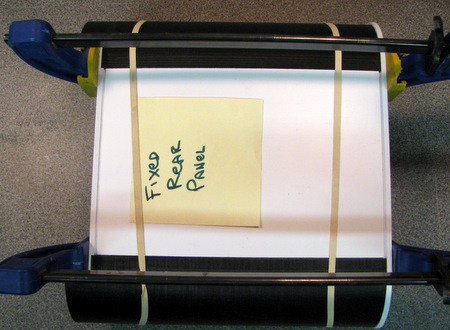
I
used a pair of heavy duty rubber bands to hold the curved ends while I
clamped the center piece and the rear panel tightly. Bolt the bottom in
place to secure the curved ends. Then put a few drops of Weldon #3 on
the joints between the rear panel , each curved end and the center piece |
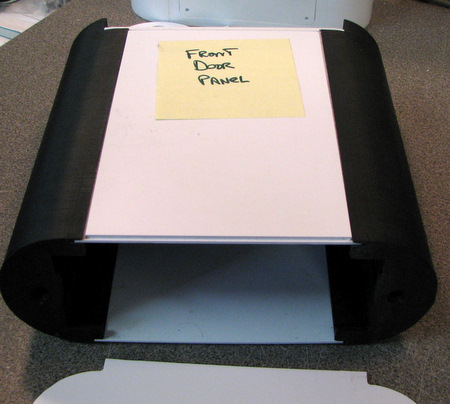
Once the glue has cured, remove the clamps and unbolt
the bottom. Then carefully slide out the front door panel. |
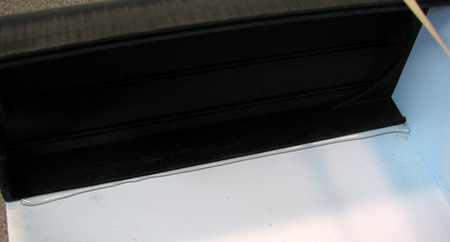
I
put rubber bands back in place to avoid over stressing the joints. Now
put a bead of Weldon #16 on the inside joints of the curved ends and
the back panel. let the glue dry. |
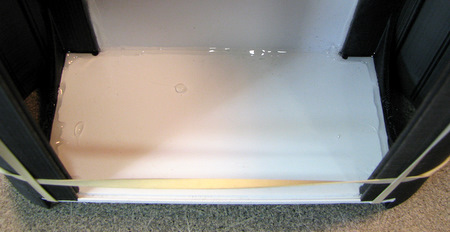
Turn
the assembly on it's end and put a bead of Weldon #16 around the
joints. Because of the tight quarters, I found it easier to use a 1.5oz
tube of cement instead of the larger 5oz tube I usually use. |
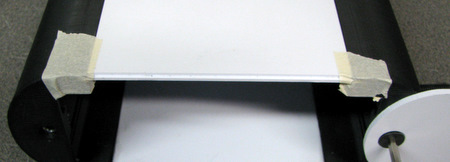
once
the rear panel joints are dry check the front door fit again. It should
still slide smoothly. put some tape over the ends as shown. |
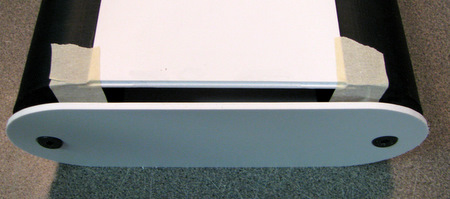
bolt the bottom panel in place. The countersinks
establish the location of the panel. |
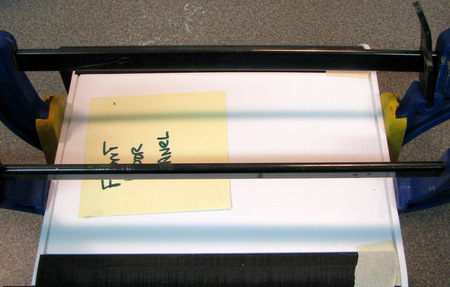
Above: Clamp. This time we want the clamp force in the
middle of the joint.
Right:
Put just 2-3 drops of Weldon #3 in the middle of the joint. You want to
be careful to NOT glue the bottom panel to the curved ends. [That's
what the tape is for!] |
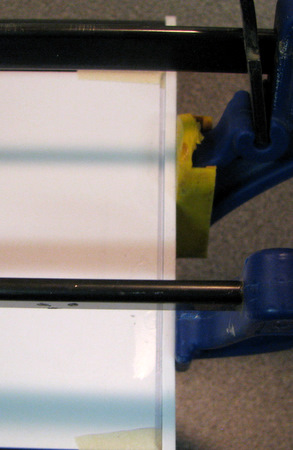 |
Below: when
the glue is dry, unclamp and unbolt. then peel the tape back. To avoid
stressing the joint, push the door down from the top. then remove
entirely. handle carefully as there is very little area in the glue
joint.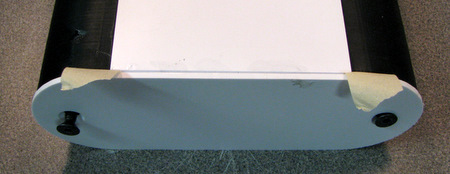
Right: as you can expect, the resulting joint comes
out square.That's not what we really want since that joint, and the
bolts, are all that hold the back door tightly against the back of the
battery box.
|
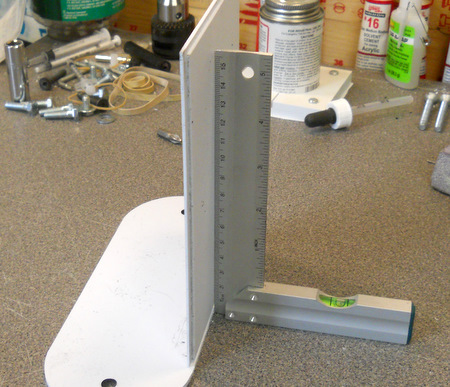
|
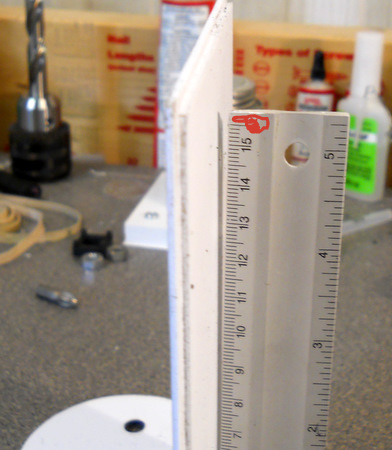
|
Left: before we proceed to reinforce the
joint, very carefully bend the door so it's at a slight angle to the
end.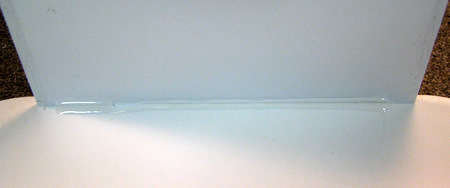
Above: then run a bead of Weldon #16 on the inside of
the joint. |
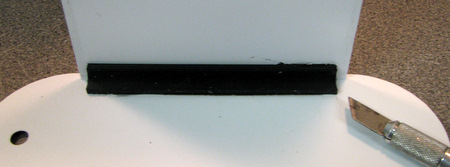
Above: before the glue sets press the corner filler
into
place. use the blade of an X-Acto knife to remove any glue that might
squeeze out of the ends and block the fit of the door. Keep the slight
angle in the door when you press the corner filler in place.
Right: Slight angle after gluing. This
time measured at the end. |
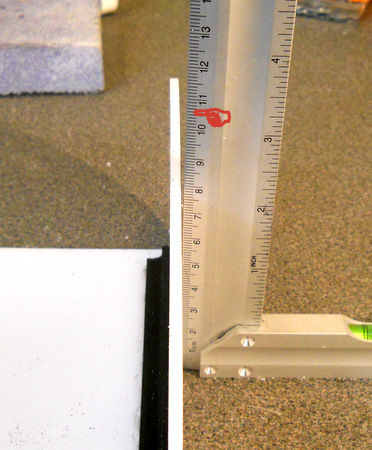 |
while you are waiting for the door panel to dry glue
the two end pieces in place. wipe off any excess glue. place the box
upside down to hold the parts in place while the glue dries.
Remember
that the end pieces determine where the hose connections are and
therefore if you have a right or a left battery box. Make sure they
match what you need and you make two different ones!
|
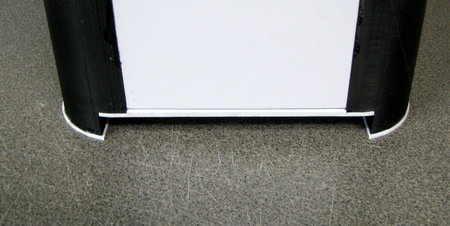
|